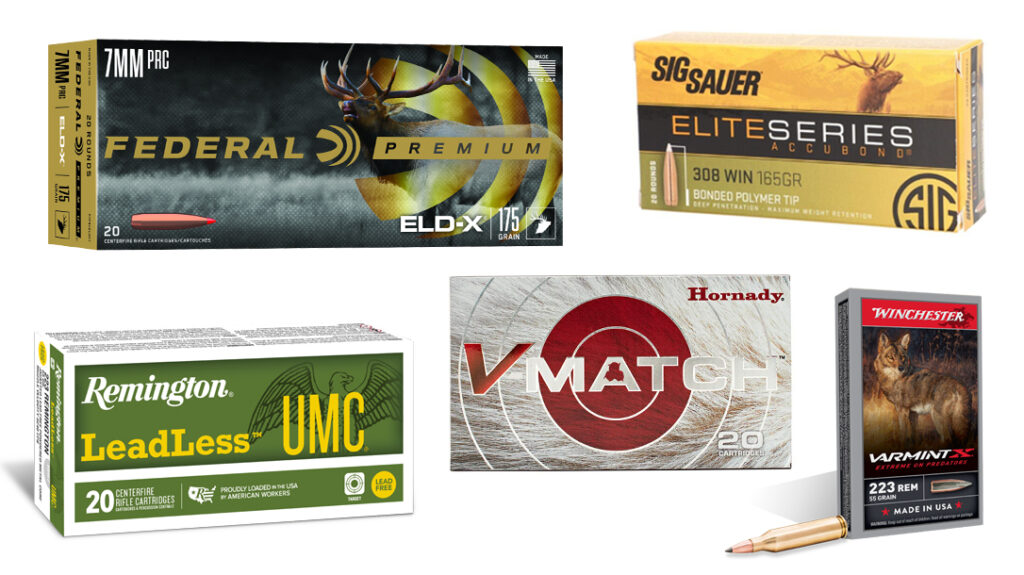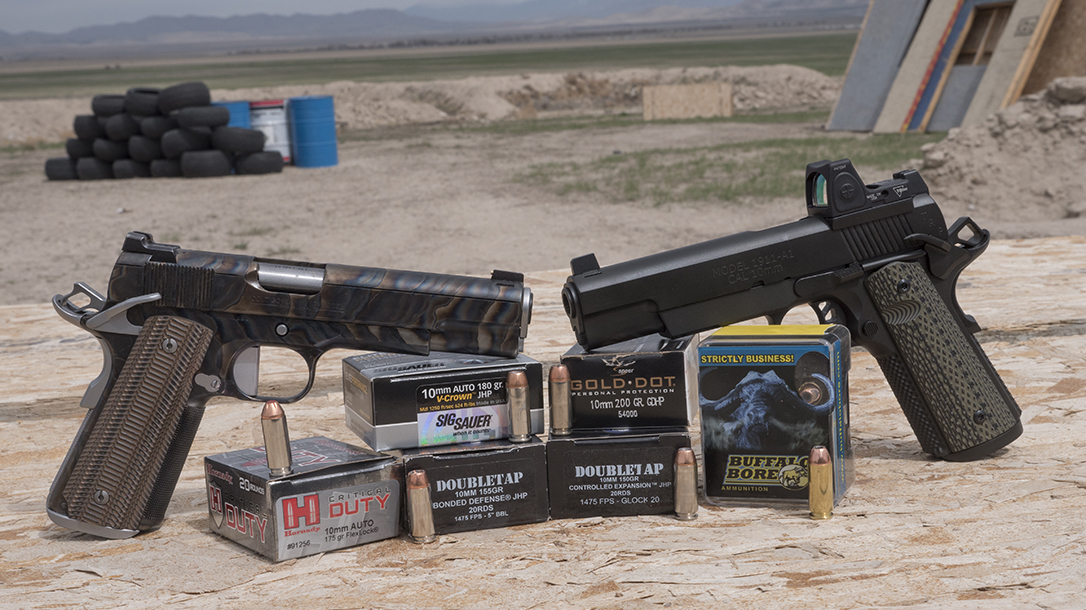We talked about the different kinds of guns in a previous installation of Shooting 101, but it should be obvious that any gun needs ammunition in order for it to be able to fire. While there are so many different types of ammo, it can be daunting to a shooting newcomer. So we’ll try to break it down here in as simple a way as possible. In order to do that, we’ll discuss different ammunition types for the three types of firearms we explored—shotguns, rifles and handguns.
Understanding Ammunition Types
First, however, a brief explanation of how ammunition works is in order, starting with centerfire ammo. Whether a shotshell, rifle or pistol cartridge, a shell has to have a case the right size for the gun’s chamber. In rifle and pistol cartridges, that case is typically made of metal like brass, while shotgun shell cases are mostly plastic, with some made of paper.
At the base of the cartridge or shell is a hole where a primer is seated into place. Gunpowder is then poured into the case, followed by a bullet seated on top for rifles and pistols, and a wad seated on the powder and shot then added to the wad in a shotshell. When the firing pin hits the primer, it creates flames that ignite the gunpowder. The pressure from the burning powder propels the projectile into the barrel and out the bore (end of the barrel).
Now is probably a good time to mention rimfire ammo, which is made to shoot from rimfire firearms, with the vast majority being .22 LR (Long Rifle). Rimfire cartridges don’t have a primer, rather the powder is pushed down into the base of the bullet. When the firing pin hits the rim of the cartridge, that ignites the powder charge.
Shotgun Ammo
Shotgun ammunition, called shotshells, come in five different “sizes”—12, 16, 20 and 28 gauge, with 12 being the largest, along with .410 bore, which is the smallest of the five. Pretty much each of the ammo types we will discuss can be found in any of those gauges.
The vast majority of shotshells have multiple projectiles held within the shell. The number of those projectiles depends on the amount of space in the shell and the size of the projectiles, or “shot.” To make things even more confusing, the larger the number, the smaller the shot. Shot in small sizes like 9, 8, 7.5, 6 and 5 are typically used for shooting clay targets or hunting different smaller game bird species and other small game like rabbits and squirrels. Numbers 4, 3, 2 and some buckshot loads are more common for larger birds like waterfowl and wild turkeys. Buckshot are also commonly used in home-defense shotguns.
Understanding Gauges
The bigger the gauge, typically the more shot a shotshell will have inside. For instance, a 12-gauge Number 8 shell will typically contain about 410 pellets. A 28-gauge shell, on the other hand, will only hold about 307 Number 8 pellets. 12-gauge shells are available in 2 ¾-, 3- and 3 ½-inch lengths, with the longer shells typically holding more gunpowder and shot. 20- and 28-gauge are available in 2 ¾- and 3-inch varieties, and .410 shells are 2 ½ or 3 inches long.
Some shotshells are loaded with slugs—single, heavy projectiles, instead of shot. Slug ammo is commonly used for hunting large game in states that don’t allow rifles and for limited home defense. While they contain a single slug like a rifle, they don’t have the same power and range as rifle bullets, with are smaller, more aerodynamic and leave the muzzle at a much higher velocity (faster).
Rifle Ammo

Rifle ammunition is more complicated because there are so many different “calibers” or sizes. The most popular based on retail sales are .223 and 5.56—both rounds that are used in AR-style rifles. Most rifle ammunition runs from about .22 caliber (.22/100 of an inch) to .30 caliber, but rifle rounds all the way up to .50 caliber are available and used by many shooters. Aside from the previously mentioned .223, some of the most common calibers are .243 Win, .308 Win, .30-06 Springfield, 7mm Win Mag and .300 Win Mag.
Since they are designed for longer distance shooting than shotguns or handguns, rifle bullets are made in a more aerodynamic shape so they cut through the wind better. And since rifle cartridges utilize more powder than pistol cartridges, the bullets leave the muzzle at a higher velocity, thus aren’t as easily affected by gravity.
Full-metal jacket (FMJ) ammo, a solid, usually pointed bullet, is most frequently used for range shooting and competition. A wide variety of hunting bullets, like ballistic tips or hollow points, are made to expand upon entering their target, resulting in a quicker, cleaner harvest of game.
Pistol Ammo

Pistol ammunition is just as complicated as rifle ammo. Pistols are chambered in a wide variety of calibers, with some of the most common being .22 LR, .380 ACP, 9mm, .40 S&W, 10mm and .45 ACP. As with rifle ammo, FMJ (also called ball) ammo is frequently used for target practice, plinking and competition. Hollows-point rounds and other specialized bullets made for expanding after hitting their target are most frequently used for self-defense, home defense and concealed carry.
Interestingly, within any caliber, ammunition is available in a number of projectile weights, measured in grains. Thus, 9mm rounds can be found in common sizes of 115 grains, 124 grains and 147 grains. Some newer 9mm offerings even weigh less than 100 grains. Typically, the lighter the bullet for cartridges in each caliber, the more velocity the bullet will have leaving the muzzle.
There is, of course, much more that can be said about ammo, but that is a brief overview. In our next installations of Shooting 101, we’ll explore the gun buying process—another aspect that that can be difficult to navigate for those new to the world of shooting.
Find a place to shoot at NSSF’s wheretoshoot.org.






Didn’t find what you were looking for?
Read the full article here

